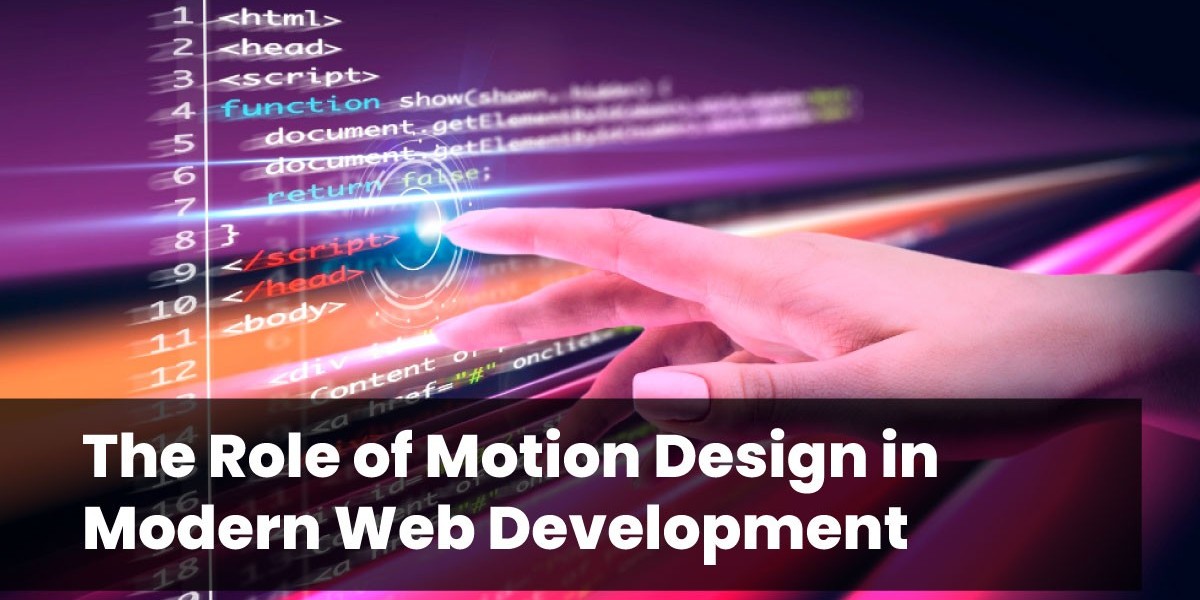In the dynamic realm of web development, staying ahead of the curve is essential to creating engaging and interactive user experiences. One of the key elements revolutionizing the way we interact with websites is motion design. Unlike static websites of the past, modern web development increasingly incorporates motion design to captivate audiences, enhance user engagement, and convey complex information in an intuitive manner.
In this blog, we'll explore the pivotal role of motion design in modern web development and how it is shaping the digital landscape.
Enhancing User Experience:
Motion design adds a layer of interactivity and responsiveness to websites, making the user experience more enjoyable and memorable. Interactive animations, micro-interactions, and seamless transitions guide users through the website, providing visual cues that help them understand the interface and navigate effortlessly. By engaging users on a visual and interactive level, motion design enhances the overall usability of the website.
Visual Storytelling:
Humans are naturally drawn to movement and visual storytelling. Motion design allows web developers to tell compelling stories through animations, videos, and dynamic graphics. Whether it's a background video illustrating a product in action or an animated infographic explaining complex data, motion design enables websites to convey information in a visually appealing and digestible format. This storytelling aspect not only captures users' attention but also makes the content more memorable and impactful.
Building Brand Identity:
Consistent and well-crafted motion design elements can reinforce a brand's identity. From logo animations to interactive brand mascots, motion design can create a unique and recognizable brand presence on the web. These dynamic elements not only grab attention but also leave a lasting impression, making the brand more memorable to visitors. By integrating motion design into their websites, businesses can establish a distinct visual identity that sets them apart from competitors.
Improving User Engagement:
Interactive elements powered by motion design encourage users to engage with the content. From interactive forms to playful hover animations, these dynamic features invite users to interact, click, and explore, increasing the time they spend on the website. Engaged users are more likely to explore multiple pages, interact with calls-to-action, and convert into customers, making motion design a valuable tool for boosting user engagement and conversion rates.
Mobile Responsiveness:
With the rise of mobile devices, responsive web design has become a standard practice. Motion design plays a crucial role in mobile responsiveness by providing touch-friendly interactive elements. Swiping gestures, tap animations, and mobile-friendly transitions enhance the mobile user experience, ensuring that websites are as engaging and functional on smartphones and tablets as they are on desktops.
Performance Optimization:
While motion design adds dynamism to websites, it's crucial to balance creativity with performance. Overly complex or resource-intensive animations can slow down the website, leading to a poor user experience. Web developers utilize techniques such as lazy loading, optimizing animations, and using efficient coding practices to ensure that motion design elements enhance the user experience without compromising loading times. This delicate balance between creativity and performance is essential for delivering seamless motion-driven interactions. suggests a web development service provider - Webomindapps.
Creating Emotion and Empathy:
Motion design has the power to evoke emotions and create empathy among users. Subtle animations, such as a gentle fade-in or a smooth transition, can convey a sense of elegance and sophistication. On the other hand, playful animations can create a sense of delight and joy. By carefully crafting motion design elements to align with the brand's tone and message, web developers can evoke specific emotions, fostering a deeper connection between the users and the website.
Future-Proofing User Interfaces:
As technology continues to advance, the role of motion design in web development will only become more prominent. Emerging technologies like virtual reality (VR) and augmented reality (AR) rely heavily on motion design to create immersive and interactive experiences. By embracing motion design now, web developers can future-proof their user interfaces, ensuring that they remain relevant and engaging as new technologies and design trends emerge.
Conclusion
The integration of motion design in modern web development is not just a trend but a fundamental shift in how we interact with digital content. It enriches user experiences, conveys information effectively, strengthens brand identities, and enhances user engagement. As web developers harness the power of motion design, they are not only creating visually stunning websites but also building immersive and memorable digital experiences that resonate with users on a profound level. Embracing motion design is not just about making websites visually appealing; it's about transforming the way we connect with the digital world, one dynamic animation at a time.
 " class="wow_main_float_head_img">
" class="wow_main_float_head_img">







